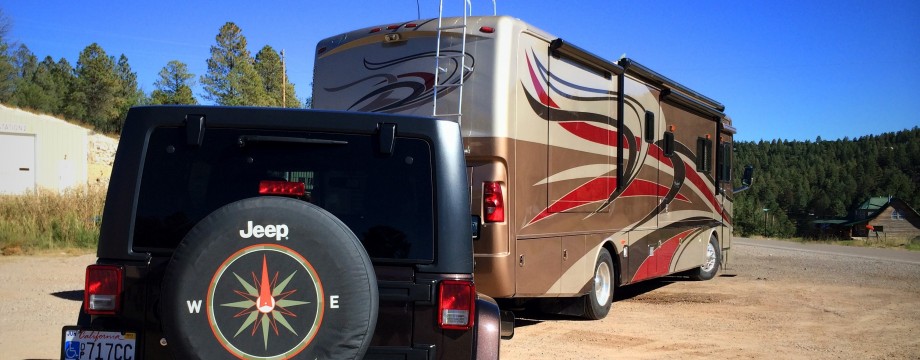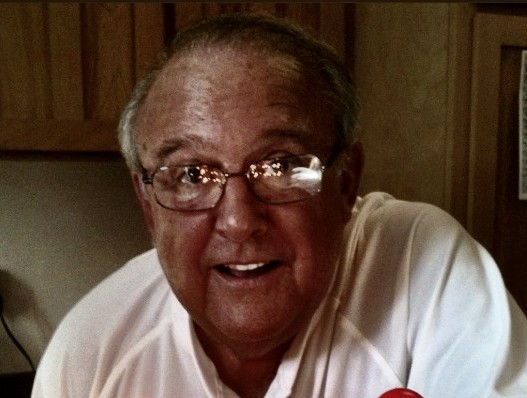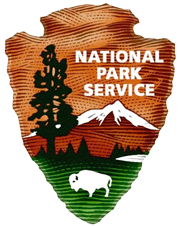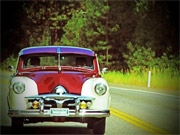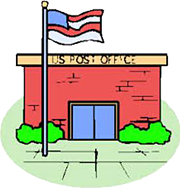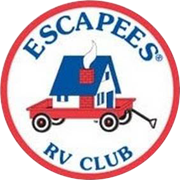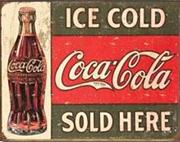Pensacola, Florida. April 18, 2016
A “MUST SEE” ATTRACTION. If your travels ever take you even close to the Florida panhandle, you simply must find time to visit the Naval Aviation Museum, located on base at Pensacola Naval Air Station. As I’ve told you in the past, lots of museums leave me flat…but not this one! More than 150 aircraft on close-up display are but one dimension of the museum’s collection. Weaponry, flight gear, uniforms, medals and decorations add a personal touch to the story of Naval Aviation told here. And the giant screen 4-D theater, the flight simulators…well, I’ll just let you see for yourselves.

At the Museum entrance, bronze statues depict aviators from WW I, WW II, Korea, Vietnam and Desert Storm.
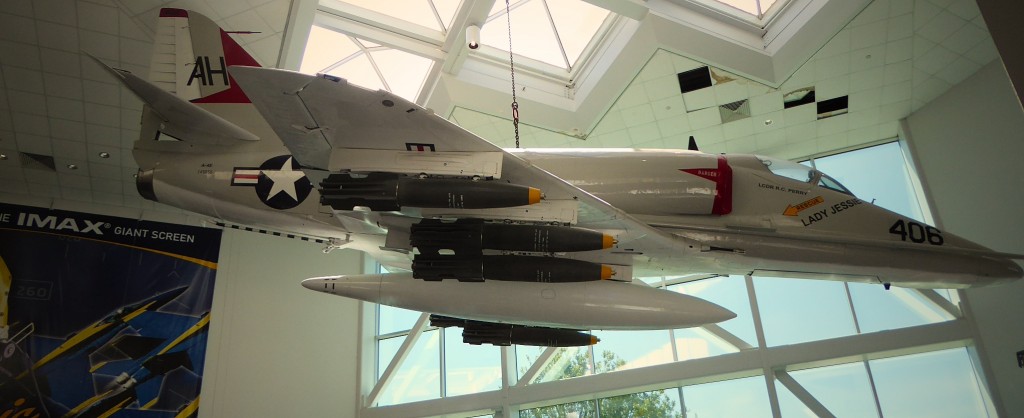
All of the aircraft on display are restored, not replicas.
TAKE IT EASY, GREG. Walking around this 350,000 square foot jam-packed, multi-level museum all day would have been impossible for me at this point in my recovery. But I’ve heard so much about the place that I didn’t want to wait any longer to take a look at it. So even though I’ve been trying to abandon all of my handicap-assist devices, today I made an exception. Wheelchairs are available at the museum and I grabbed one when we arrived. I’ve got to be realistic…it’s going to take a lot more hard work and exercise before I’m back to normal and able to walk around all day. Next week I begin outpatient therapy at the renowned West Florida Rehabilitation Institute and I’m excited about having a chance to work with some skilled therapists there. I’m really going to throw myself into it five days each week.
OUR TOUR GUIDE. Our good friend in Pensacola has been serving as our tour guide to the area, and today’s visit to the Museum was no exception. A former Marine Corps Captain and F-4 combat pilot during the Vietnam War, Jon was particularly well suited to lead us through some of the museum’s exhibits. But you can’t see it all in just one day…that’s just not enough time to explore this fabulous place. Stay tuned for what I’m sure will be a second installment of my report on this attraction.
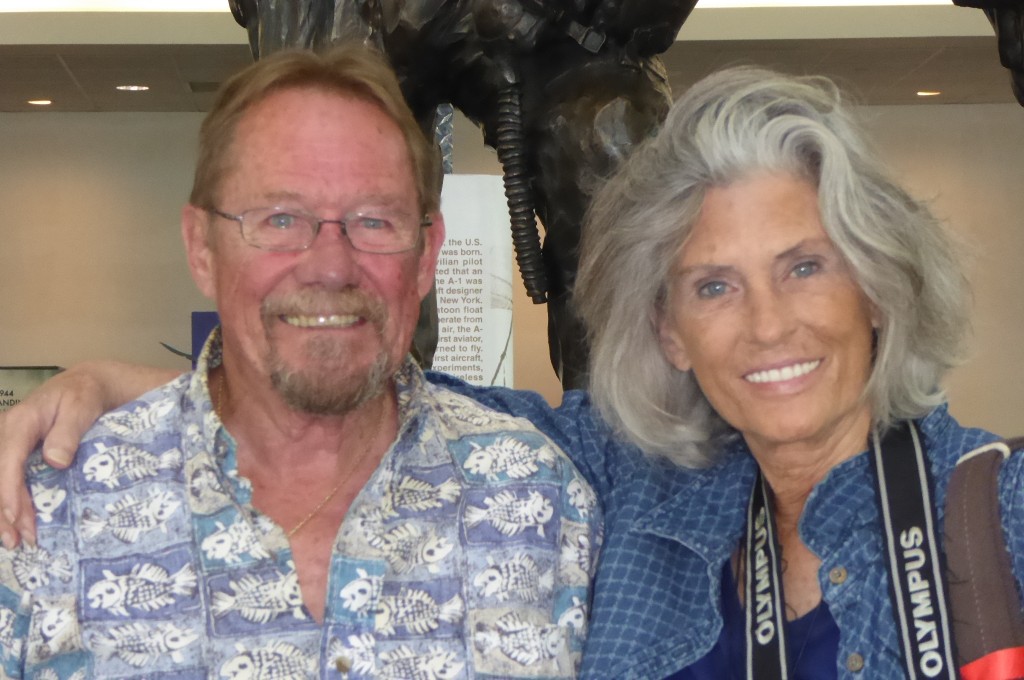
Jon and Florence pose for the camera. If you don’t like to have your picture taken, you’d better not go on an outing with me!
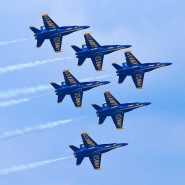
BLUE ANGELS. Pensacola is home to the famous Navy Flight Demonstration Squadron, known as the “Blue Angels.” So it’s no surprise that a substantial part of the Museum’s collection is devoted to the Angels. Their “show season” runs each year from March through November. During this time, they perform at both military and civilian venues all across the country. We’ve enjoyed their incredible presence in the skies over San Diego many times, and I always got a surge of excitement and pride when we saw them. They also roar in tight formations so close to the deck that the engine noise would scare bats out of a cave!
CUBI BAR CAFE. Named after the historic Officers’ Club at Cubi Point in the Philippines, the museum’s cafe is both a restaurant and a popular museum exhibit. The tradition of placing plaques, where the transitioning squadrons retired old plaques to commemorate each WestPac tour in the O’Club bar, was started during the Vietnam Conflict and endured until the base was closed in 1992. Thousands of those plaques were packed up and sent to the Museum, where they now adorn the walls of the cafe. During lunch, Jon regaled us with stories about the good times he had in the Club during his years as an aviator. (For my San Diego followers, the Cubi Bar Cafe is a bit like the “Top Gun Bar” at Kansas City BBQ, but about fifty times more so!)
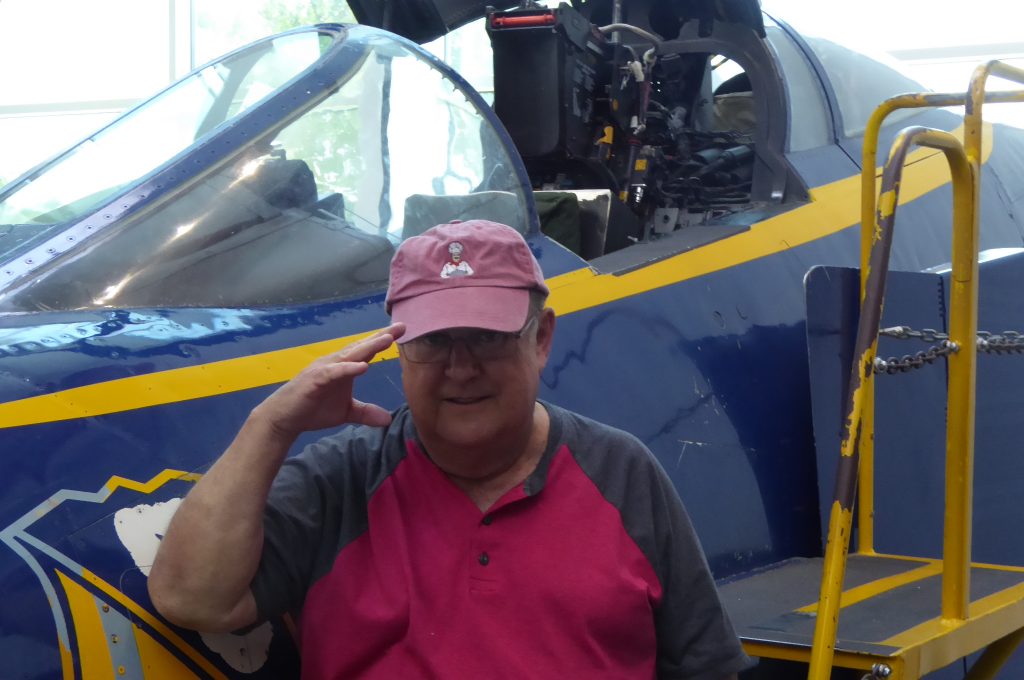
Would you believe I’m auditioning to become a member of the Angels’ Flight Crew? I didn’t think you’d fall for that one.
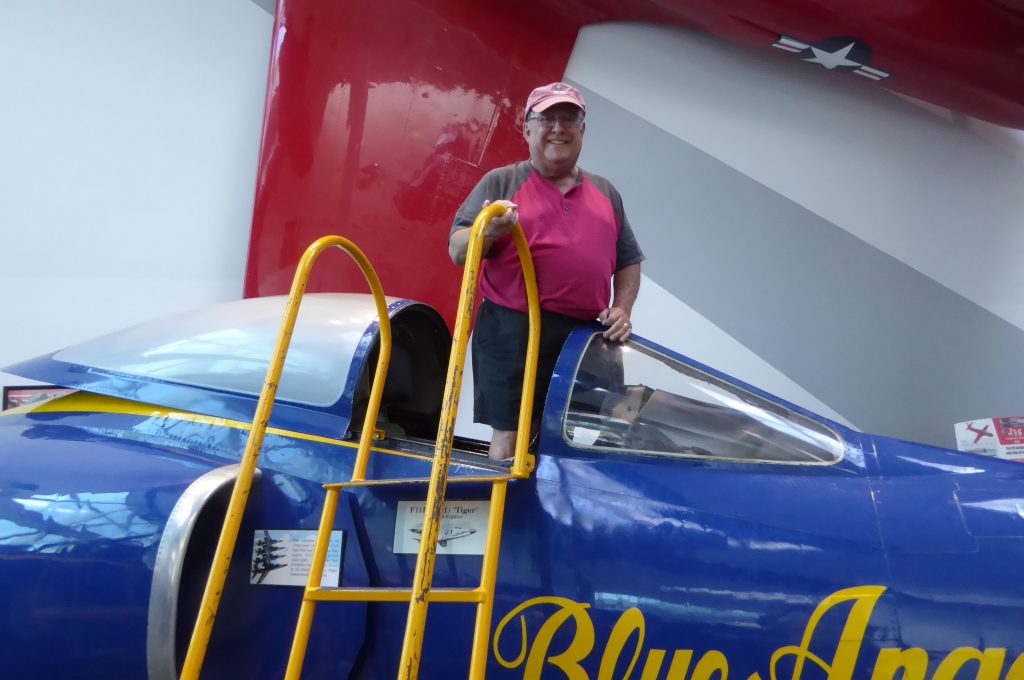
When we visited the Museum three months ago, I was in a wheelchair. This picture was taken on our second visit. No wheelchair or even a cane! And I made it up and down that ladder. I’ve really come a long way.
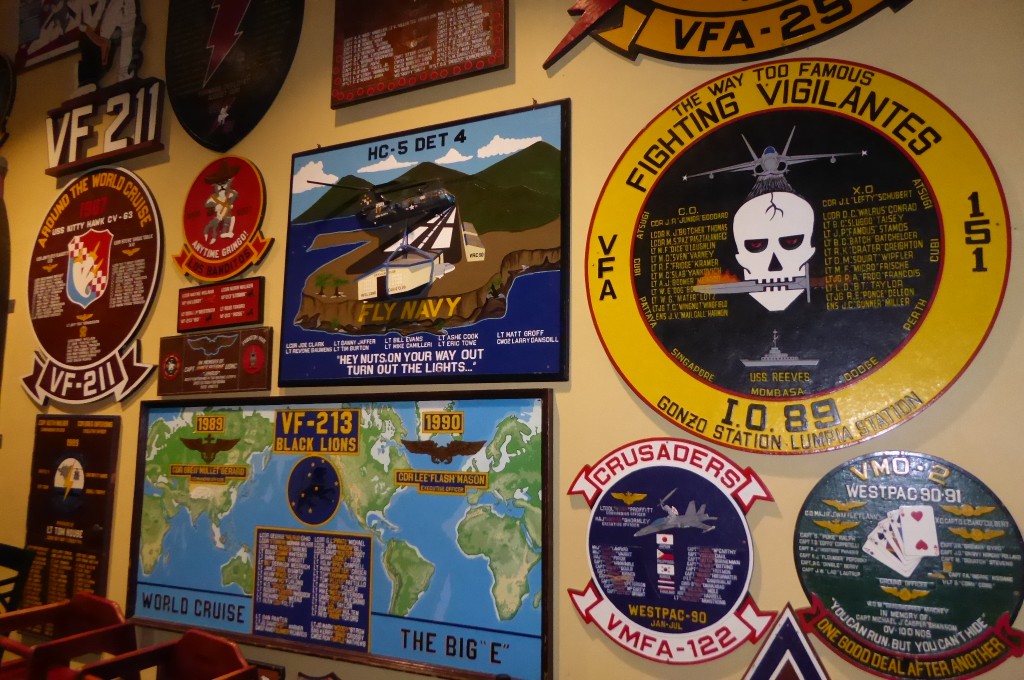
Plaques on display at the Cubi Bar Cafe.
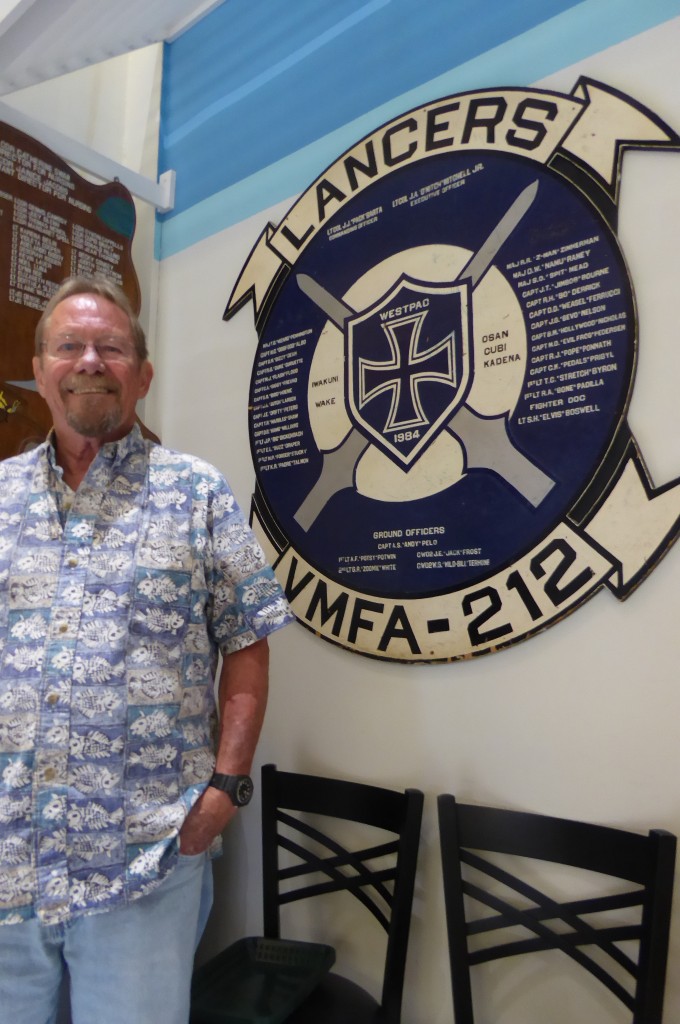
Our friend Jon and his Squadron Plaque.

Florence and her boyfriend.
AIRCRAFT. On display, up close and personal, are more than 150 beautifully restored aircraft, representing aviation history from World War I to the present time. Here’s a sampling.

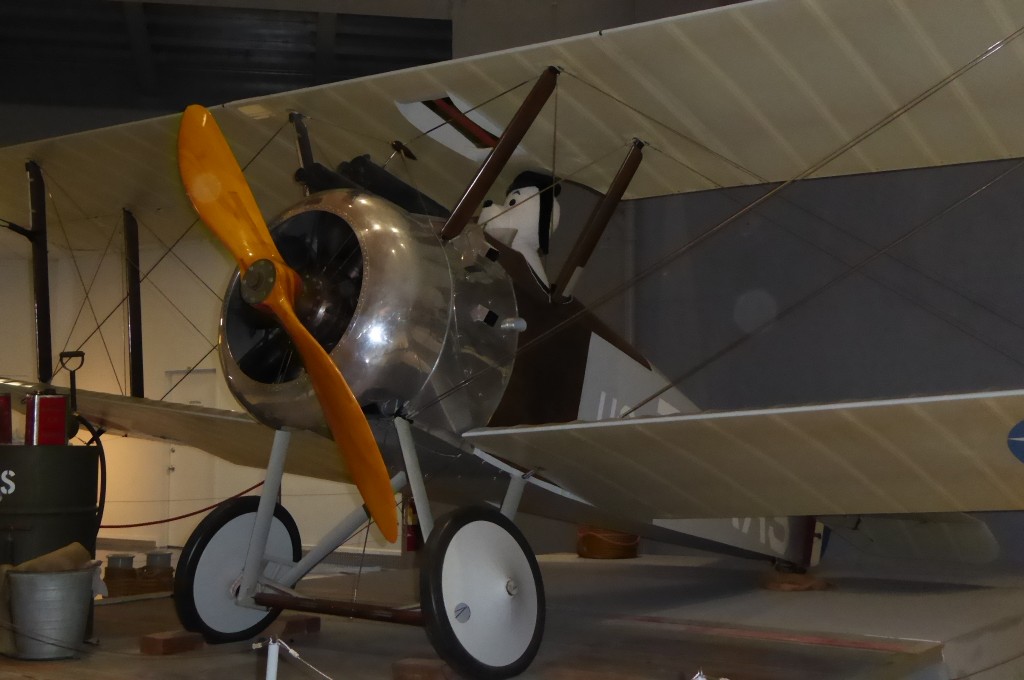

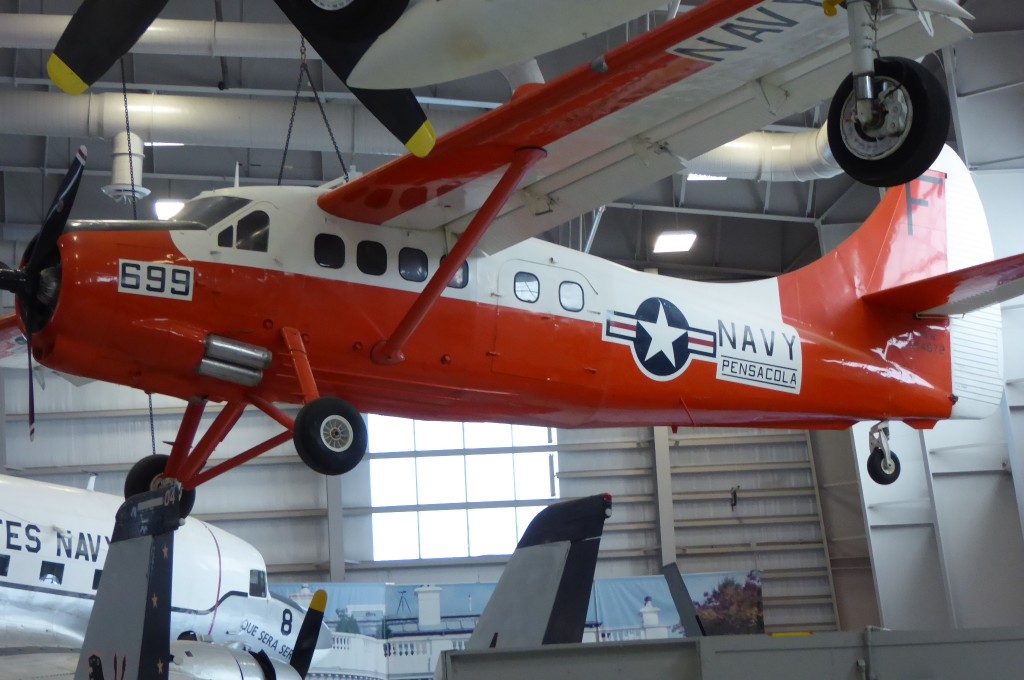
THE ANGELS EXPERIENCE. Located in Hanger Bay One, the “Angels Experience” made us feel as if we were part of an actual air show. The exhibit takes advanced 3D technologies to the next level of experience by employing interactive seats and unique special effects built into the theater itself. It’s really a trip!

Four of the six Blue Angels planes.
GIANT SCREEN THEATER. And at the Giant Screen Theater, we again felt as if we were flying with the Angels at Mach speed in their six F/A-18 Hornet aircraft! You guys know that I don’t like heights and I wouldn’t ride a roller coaster no matter what, but I absolutely loved “being in the cockpit” of a Navy jet. And the other big-screen movie we saw in this theater was “National Parks Adventure. ” Beautiful scenery. Dramatic photography. “The film captures the stunning beauty of our nation’s wild places and reminds us these landscapes are an essential part of the human spirit,” states narrator Robert Redford. I had hoped to take some very short video clips to give you a glimpse of what a professional videographer can produce, but of course no filming allowed.
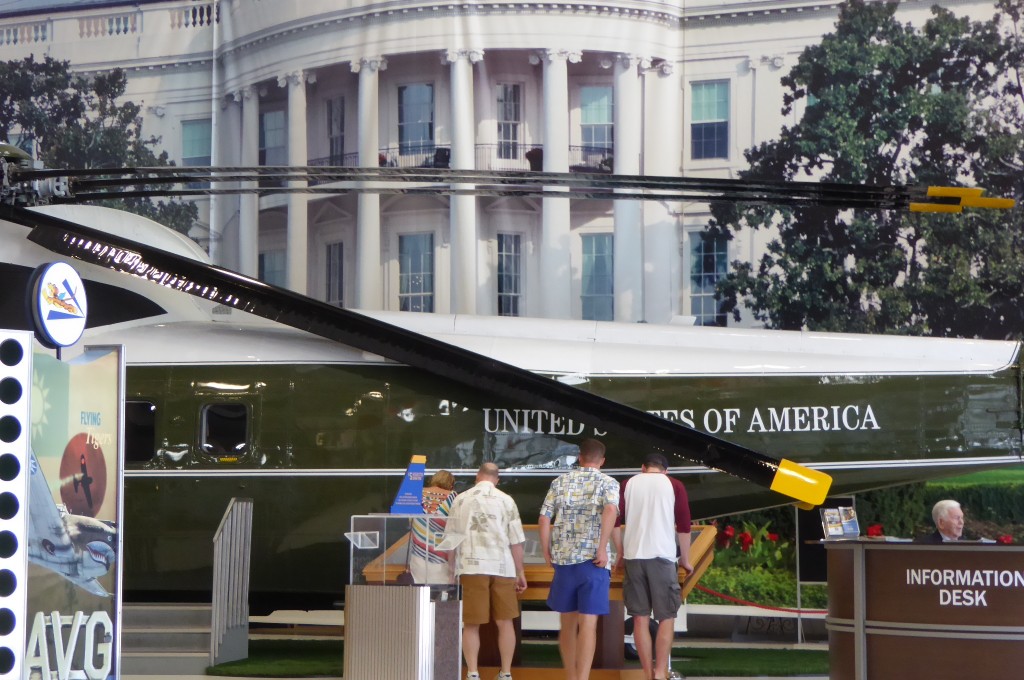
Richard Nixon’s Marine One helicopter, with the White House in the background.
FLIGHT SIMULATORS. It’s easy to understand why this museum is so very popular. Here’s an example: The Max-flight 360 Simulators allowed us to “go on an HD adventure” with the Blue Angels that was so life-like that it took my breath away! Rides in the fully enclosed simulator capsule accommodate as many as 15 passengers and can move in six directions. We experienced horizontal rolls, longitudinal pitches and vertical climbs in the cockpit of an Navy F/A-18 Hornet. On another simulator, we took off from an aircraft carrier and flew into battle in the Iraqi desert during Desert Storm, the first major foreign crisis since the end of the Cold War. Unbelievable! (Taking pictures was almost impossible inside the capsule.)
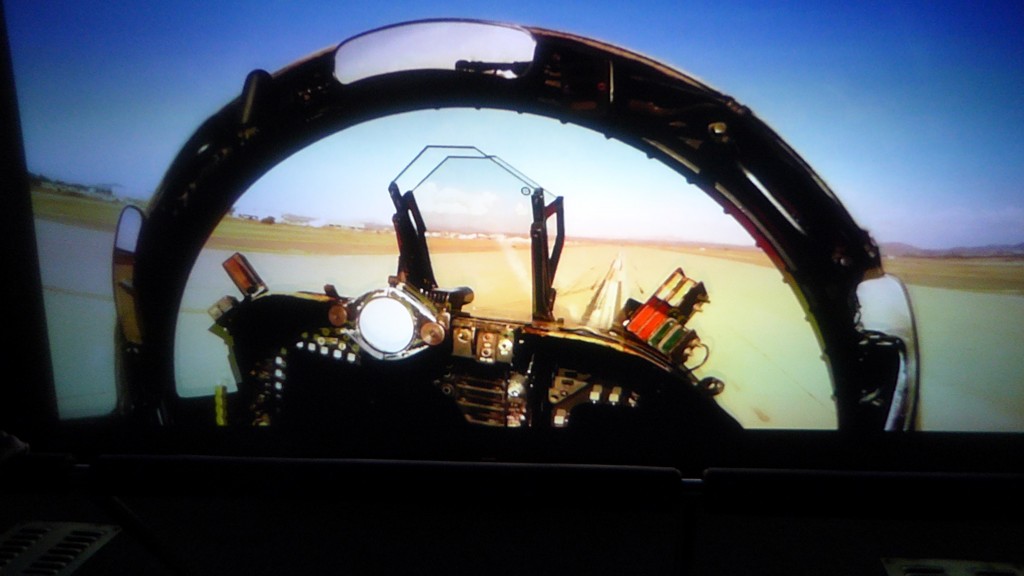
In this flight simulator we felt as if we were flying a mission into the desert during the Gulf War.


An aircraft carrier has a range of 75 – 90 aircraft aboard, plus some helicopters.
THAT’S A WRAP. In a sense, Naval Aviation began in what was then a sleepy little southern town called Pensacola on the Gulf of Mexico in 1914, where the first Naval Air Station was constructed. Accordingly, it makes perfect sense that Pensacola has a world-class Museum to commemorate its place, and that of Naval Aviation, in history.
THANKS FOR JOINING US. COME BACK AGAIN SOON. I’LL CONTINUE MY STORY NEXT TIME.



